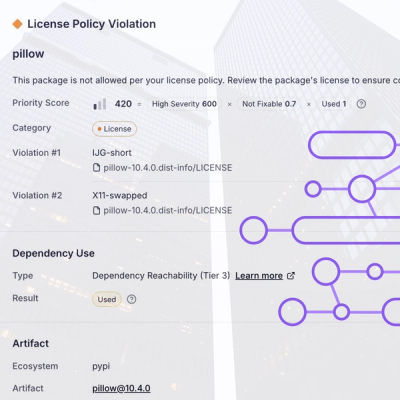
Research
/Security News
Critical Vulnerability in NestJS Devtools: Localhost RCE via Sandbox Escape
A flawed sandbox in @nestjs/devtools-integration lets attackers run code on your machine via CSRF, leading to full Remote Code Execution (RCE).
jekyll-contentblocks
Advanced tools
Gives you a mechanism in Jekyll to pass content up from pages into their parent layouts. It's kind of like having Rails' content_for available for Jekyll.
Add this line to your Jekyll project's Gemfile:
group :jekyll_plugins do
gem 'jekyll-contentblocks'
end
Then execute:
$ bundle install
Execute:
$ gem install jekyll-contentblocks
And initialize it in a plugin:
# _plugins/ext.rb
require "rubygems"
require "jekyll-contentblocks"
In your layout files, define contentblock blocks that say where content will
end up. For example, say the file _layouts/default.html looks like this:
<html>
<head>
{% contentblock scripts %}
</head>
<body>
<div class="main">
{{ content }}
</div>
<div class="sidebar">
{% contentblock sidebar %}
</div>
</body>
</html>
Now to add content to the sidebar from a post, you'd just need to do something like:
---
layout: default
---
Here is my post content.
{% contentfor sidebar %}
* Some content
* in a markdown list
* with some {{ 'liquid' }} tags too!
{% endcontentfor %}
Note that we didn't add anything to the scripts block in the post. That's OK,
content blocks without any content will be ignored.
By default, a content block will be run through the converter for the current
file (Markdown, for instance). Sometimes this is not desirable, such as for
blocks containing code that shouldn't be modified. In the example above, content
in the scripts block will be converted by default. To prevent this, add the
no-convert option to the block, like this:
{% contentblock scripts no-convert %}
Now any content added to scripts will be placed in the block without any
formatting applied.
We might want to check if the particular contentblock has content before using
it in our template. To do this, use the ifhascontent tag:
{% ifhascontent javascripts %}
<script type="text/javascript>
{% contentblock javascripts %}
</script>
{% endifhascontent %}
Similarly, there's the opposite tag, ifnothascontent:
{% ifnothascontent sidebar %}
<div>
This is our default sidebar.
</div>
{% endifnothascontent %}
git checkout -b my-new-feature)git commit -am 'Add some feature')git push origin my-new-feature)Try to make sure that your changes work with all of the latest point releases of Jekyll. To do this, run the test suite:
> bundle
> bundle exec appraisal install
> bundle exec appraisal rpsec
FAQs
Unknown package
We found that jekyll-contentblocks demonstrated a not healthy version release cadence and project activity because the last version was released a year ago. It has 1 open source maintainer collaborating on the project.
Did you know?

Socket for GitHub automatically highlights issues in each pull request and monitors the health of all your open source dependencies. Discover the contents of your packages and block harmful activity before you install or update your dependencies.

Research
/Security News
A flawed sandbox in @nestjs/devtools-integration lets attackers run code on your machine via CSRF, leading to full Remote Code Execution (RCE).

Product
Customize license detection with Socket’s new license overlays: gain control, reduce noise, and handle edge cases with precision.

Product
Socket now supports Rust and Cargo, offering package search for all users and experimental SBOM generation for enterprise projects.